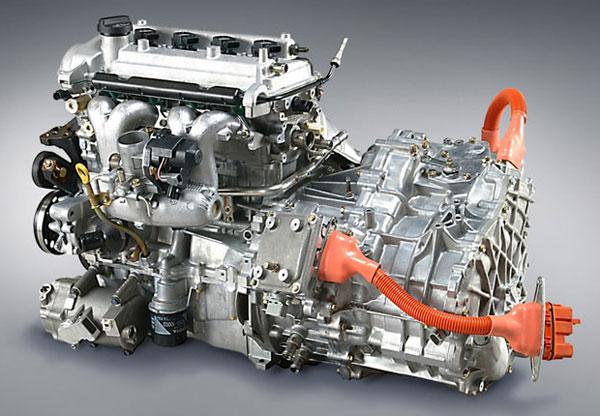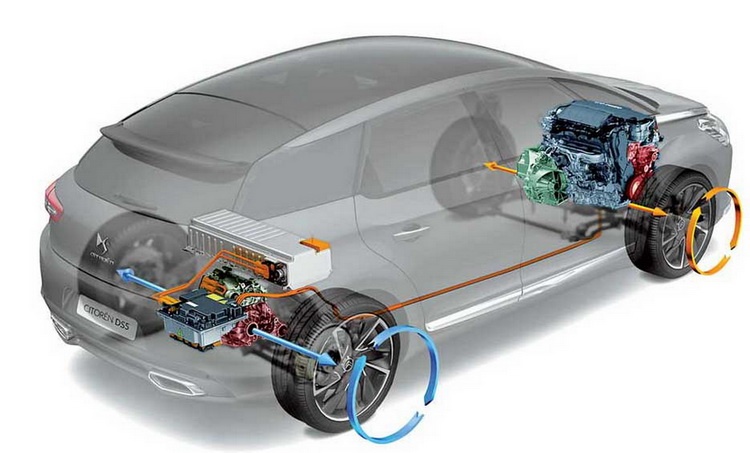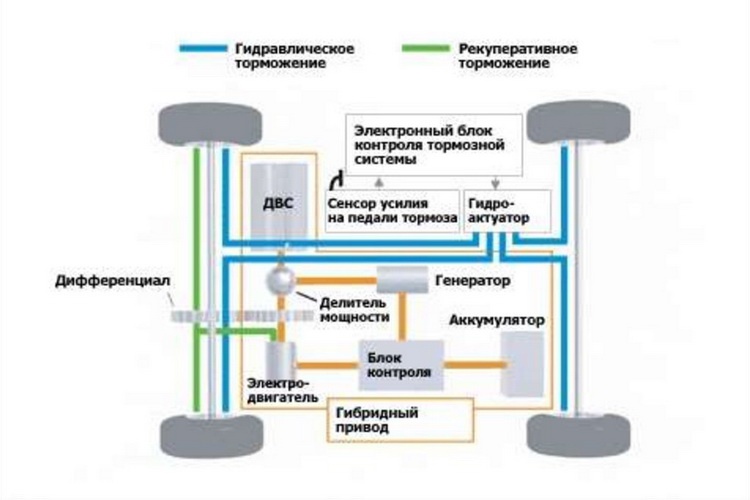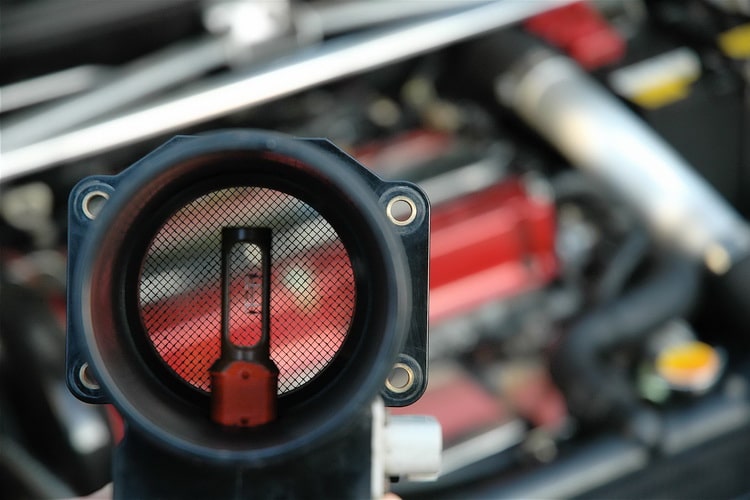
How a hybrid engine works, the pros and cons of an economical motor
Content
The emergence of hybrid vehicles has become a forced measure of automakers in the transition from internal combustion engines (ICE) on hydrocarbon fuels to cleaner power plants. Technology has not yet allowed the creation of a full-fledged electric car, a fuel cell car, or any other from a large list of theoretically possible directions for the development of autonomous transport, and the need has already matured.

Governments began to strongly clamp down on the auto industry with environmental requirements, and consumers wanted to see a qualitative step forward, and not another microscopic improvement of a motor known for more than a century on one of the oil refining products.
Which car is called a "hybrid"
The power unit of the intermediate stage began to be a combination of an already proven design of an internal combustion engine and one or more electric motors.
The electrical part of the traction unit is powered by generators mechanically connected to a gas engine or diesel engine, batteries and a recovery system that returns energy released during vehicle braking to the drive.

All the numerous schemes for the practical implementation of the idea are called hybrids.
Sometimes manufacturers mislead customers by calling hybrids systems where the electric drive is used only to start the main motor in start-stop mode.
Since there is no connection between electric motors and wheels and the possibility of driving on electric traction, it is incorrect to attribute such cars to hybrid ones.
The principle of operation of hybrid engines
With all the variety of designs, such machines have common features. But the differences are so great from a technical point of view that in fact they are different cars with their own advantages and disadvantages.
Устройство
Each hybrid includes:
- internal combustion engine with its transmission, on-board low-voltage power supply network and fuel tank;
- traction motors;
- storage batteries, most often high-voltage ones, consisting of batteries connected in series and in parallel;
- power wiring with high-voltage switching;
- electronic control units and on-board computers.
Ensuring all modes of operation of an integrated mechanical and electric transmission usually occurs automatically, only general traffic control is entrusted to the driver.
Work schemes
It is possible to connect the electrical and mechanical components to each other in different ways; over time, well-established specific, often used schemes have stood out.
This does not apply to the later classification of the drive according to the specific share of electric traction in the overall energy balance.
Consistent
The very first scheme, the most logical, but now little used in cars.


Its main task was to work in heavy equipment, where compact electrical components have successfully replaced a bulky mechanical transmission, which is also very difficult to control. The engine, usually a diesel engine, is loaded exclusively on an electric generator and is not directly connected to the wheels.
The current generated by the generator can be used to charge the traction battery, and where it is not provided, it is sent directly to the electric motors.
There can be one or more of them, up to installation on each wheel of a car according to the principle of the so-called motor-wheels. The amount of thrust is regulated by the power electric unit, and the internal combustion engine can constantly operate in the most optimal mode.
Parallel
This scheme is now the most common. In it, the electric motor and internal combustion engine work for a common transmission, and the electronics regulate the optimal ratio of energy consumption by each of the drives. Both engines are connected to the wheels.


The recovery mode is supported, when, during braking, the electric motor turns into a generator and recharges the storage battery. For some time, the car can only move on its charge, the main internal combustion engine is muffled.
In some cases, a battery of considerable capacity is used, equipped with the possibility of external charging from a household AC network or a specialized charging station.
In general, the role of batteries here is small. But their switching is simplified, dangerous high voltage circuits are not needed here, and the mass of the battery is much less than that of electric vehicles.
Mixed
As a result of the development of electric drive technology and storage capacity, the role of electric motors in creating tractive effort has increased, which has led to the emergence of the most advanced series-parallel systems.


Here, starting from a standstill and moving at low speeds are carried out on electric traction, and the internal combustion engine is connected only when high output is required and when the batteries are exhausted.
Both motors can operate in drive mode, and a well-thought-out electronic unit chooses where and how to direct energy flows. The driver can follow this on the graphic information display.
An additional generator is used, as in a series circuit, which can supply energy to electric motors or charge a battery. The braking energy is recuperated through the reverse of the traction motor.
This is how many modern hybrids are arranged, in particular one of the very first and well-known - Toyota Prius
How does a hybrid engine work on the example of Toyota Prius
This car is now in its third generation and has reached a certain degree of perfection, although competing hybrids continue to increase the complexity and efficiency of designs.


The basis of the drive here is the principle of synergy, according to which an internal combustion engine and an electric motor can participate in any combination in creating torque on the wheels. The parallelism of their work provides a complex mechanism of the planetary type, where the power flows are mixed and transmitted through the differential to the drive wheels.
Starting off and starting acceleration is performed by an electric motor. If the electronics determines that its capabilities are not enough, an economical gasoline engine operating on the Atkinson cycle is connected.
In conventional cars with Otto motors, such a thermal cycle cannot be used due to transient conditions. But here they are provided by an electric motor.
The idle mode is excluded, if the Toyota Prius automatically starts the internal combustion engine, then work is immediately found for it, to help in acceleration, charge the battery or provide air conditioning.
Constantly having a load and working at optimal speed, it minimizes gasoline consumption, being at the most advantageous point of its external speed characteristic.


Watch this video on YouTube
There is no traditional starter, since such a motor can only be started by spinning it to a significant speed, which is what a reversible generator does.
Batteries have different capacities and voltages, in the most complex rechargeable version of the PHV, these are already quite common for electric vehicles 350 volts at 25 Ah.
Advantages and disadvantages of hybrids
Like any compromise, hybrids are inferior to pure electric vehicles and the usual classic oil-fueled ones.


But at the same time they give a gain in a number of properties, for someone acting as the main ones:
- simplification of the means used to combat harmful emissions of internal combustion engines;
- achieving some fuel economy, however contested;
- the possibility of movement on pure electric traction where the use of internal combustion engines is prohibited;
- a fairly simple increase in the declared capacity;
- the impossibility, unlike an electric car, to remain without energy away from the electrical network.
All the disadvantages are associated with the complication of technology:
- the need for competent personnel specially trained to work with hybrids;
- an increase in the mass of the vehicle, which also consumes fuel;
- higher price of the car;
- loss to electric vehicles due to the preservation of the internal combustion engine and everything connected with it;
- still insufficiently developed technologies and the lack of a unified approach to design;
- poor environmental friendliness in the production of batteries and their disposal.
It is possible that the production of hybrids will continue after the complete disappearance of classic cars.
But this will happen only if a single compact, economical and well-controlled hydrocarbon fuel engine is created, which will be a good addition to the electric car of the future, significantly increasing its still insufficient autonomy.
